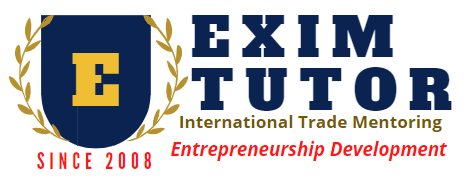Possible Methods of Trade Diversification During High Import Tariff Charging
Trade Diversification Rout During High Import Tariff Charging
Global trade has always been subject to fluctuations in political, economic, and regulatory environments. One of the most pressing challenges businesses face is the imposition of high import tariffs by countries aiming to protect their domestic industries. While these tariffs can increase the cost of goods and erode competitiveness, they also present opportunities for exporters and importers to diversify trade strategies. Diversification not only reduces dependency on single markets but also strengthens long-term resilience. Here are some effective methods for trade diversification during periods of high tariff impositions:
1. Market Diversification
When one market becomes cost-prohibitive due to tariffs, companies can explore alternative destinations with favorable trade conditions.
- Identify untapped markets in emerging economies where demand for products is rising.
- Use trade agreements such as Free Trade Agreements (FTAs) and regional blocs (e.g., ASEAN, Mercosur, African Continental Free Trade Area) to access tariff-free or low-tariff markets.
- Conduct market feasibility studies to evaluate cultural, legal, and consumer preferences before entering.
2. Product Diversification
Relying on a single product line during tariff hikes can be risky. Companies should consider broadening their product portfolio to serve new customer segments.
- Adapt products to meet local standards and certifications in different regions.
- Develop value-added products (e.g., semi-processed or finished goods) instead of raw materials, which are often subjected to higher tariffs.
- Explore niche products with less tariff exposure, such as eco-friendly or technologically advanced goods.
3. Sourcing and Supply Chain Diversification
High import tariffs often apply to specific countries of origin. Businesses can restructure supply chains to minimize cost burdens.
- Shift sourcing to countries with lower tariffs or preferential trade status.
- Establish regional production hubs closer to target markets to avoid import duties altogether.
- Collaborate with third-party logistics providers to optimize freight routes and reduce landed costs.
4. Leveraging Regional and Bilateral Trade Agreements
Trade agreements play a crucial role in overcoming tariff challenges.
- Identify bilateral trade treaties where tariff concessions exist.
- Use rules of origin strategically—sourcing components from partner countries can help products qualify for reduced tariffs.
- Engage with export promotion councils and government bodies to maximize incentives offered under trade agreements.
5. Investment in Local Manufacturing or Joint Ventures
Instead of exporting directly, companies can invest in local production facilities within the target country or region.
- Set up joint ventures with local firms to bypass tariff barriers and gain access to established networks.
- Establish assembly units in tariff-heavy regions to import components instead of finished goods.
- Take advantage of tax incentives and subsidies offered by host countries to attract foreign investors.
6. Digital Trade and E-Commerce Platforms
With the rise of digital globalization, exporters can bypass some traditional barriers through online channels.
- Sell directly to consumers through cross-border e-commerce platforms, reducing reliance on importers.
- Use digital marketing strategies to target niche international buyers.
- Explore digital services exports such as consulting, design, or IT solutions, which are often outside the tariff regime.
7. Risk Management and Financial Hedging
High tariffs not only increase costs but also create uncertainty in trade flows. Businesses should adopt risk management strategies to remain financially stable.
- Use hedging instruments like forward contracts to manage currency fluctuations.
- Invest in insurance policies to protect against sudden regulatory changes.
- Develop scenario planning models to anticipate and prepare for policy shifts.
8. Collaboration with Trade Networks
Exporters and importers can strengthen resilience by engaging in trade clusters, chambers of commerce, and industry associations.
- Collaborate to lobby for tariff relaxations or preferential treatment.
- Share intelligence on new market opportunities and best practices.
- Participate in international trade fairs and exhibitions to expand buyer-seller connections beyond tariff-heavy zones.
Conclusion
High import tariffs can be disruptive, but they also serve as a catalyst for innovation and expansion. By diversifying markets, products, and supply chains while leveraging trade agreements, businesses can protect their competitiveness and even discover new growth opportunities. The key lies in being proactive, adaptive, and strategic in building a resilient international trade portfolio.
